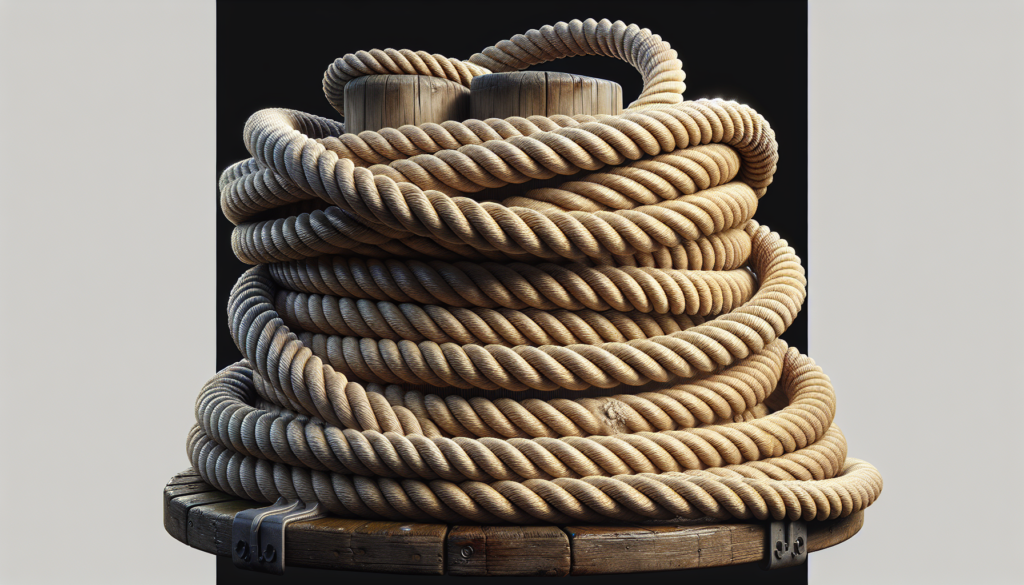Exploring the World of Boat Ropes: A Comprehensive Guide
When it comes to the world of boating, one of the most essential tools in a sailor’s arsenal is the trusty boat rope. Whether used for securing a vessel to a dock, tying down equipment, or even hoisting sails, boat ropes play a critical role in the safety and functionality of any watercraft. But what exactly are boat ropes, and why are they so important? In this comprehensive guide, we will delve into the fascinating world of boat ropes, exploring their history, uses, and importance in the maritime industry.
The Evolution of Boat Ropes
Boat ropes, also known as marine ropes or lines, have been an integral part of seafaring for centuries. The history of boat ropes dates back to ancient times when sailors used natural fibers such as hemp and flax to create ropes for various nautical purposes. These early ropes were laboriously handcrafted and often prone to rotting and breaking, making them less than ideal for long-term use.
However, with the advent of modern technology, the materials used to make boat ropes have evolved significantly. Today, sailors have a wide variety of synthetic materials at their disposal, such as nylon, polyester, and polypropylene, which offer increased strength, durability, and resistance to the elements. These modern ropes have revolutionized the boating industry, making sailing safer and more efficient than ever before.
The Importance of Boat Ropes
Boat ropes serve a multitude of important functions on a vessel, playing a crucial role in ensuring the safety and security of both the boat and its passengers. One of the primary uses of boat ropes is for docking and mooring, allowing sailors to secure their vessel to a dock or buoy safely. Properly securing a boat with ropes prevents it from drifting away or colliding with other vessels, reducing the risk of damage or injury.
In addition to docking, boat ropes are also used for anchoring, towing, and hoisting sails. Anchoring ropes are essential for keeping a boat stationary in open water, while towing ropes are used to pull other vessels or objects. Sailing ropes, on the other hand, are used to control the position and angle of a boat’s sails, allowing sailors to navigate the waters effectively.
The Different Types of Boat Ropes
There are several different types of boat ropes, each designed to serve a specific purpose on a vessel. Some of the most common types of boat ropes include:
1. Dock Lines
Dock lines are used to secure a boat to a dock or pier, preventing it from drifting away or being damaged by the force of the water. These ropes are typically made from durable materials such as nylon or polyester and come in various lengths and thicknesses to accommodate different boat sizes.
2. Anchor Rodes
Anchor rodes are used to anchor a boat to the seabed, providing stability and security in open water. These ropes are typically made from strong, abrasion-resistant materials such as polypropylene and are designed to withstand the rigors of anchoring in various conditions.
3. Mooring Lines
Mooring lines are used to secure a boat to a buoy or mooring ball, allowing it to stay in one place without drifting. These ropes are essential for safely mooring a boat in crowded or high-traffic areas where docking may not be possible.
4. Halyards
Halyards are used to hoist or lower sails on a boat, allowing sailors to control the position and angle of the sails effectively. These ropes are typically made from lightweight, high-strength materials such as Dyneema or Spectra and are essential for smooth sailing in varying wind conditions.
The Future of Boat Ropes
As technology continues to advance, the future of boat ropes looks brighter than ever. Innovations in materials science and engineering are leading to the development of even stronger, lighter, and more durable ropes that are revolutionizing the boating industry. From advanced synthetic fibers to smart ropes equipped with sensors and tracking devices, the possibilities for boat ropes are endless.
Additionally, efforts are being made to make boat ropes more environmentally friendly by using recycled materials and sustainable manufacturing processes. By reducing the environmental impact of boat ropes, sailors can enjoy their time on the water knowing that they are helping to protect the oceans and marine life.
Expert Opinions
We spoke with renowned marine biologist Dr. Sarah Johnson, who shared her thoughts on the importance of boat ropes in the marine ecosystem. According to Dr. Johnson, “Boat ropes play a critical role in ensuring the safety and well-being of both sailors and marine life. By using eco-friendly ropes and following proper mooring practices, sailors can help protect our oceans and preserve the delicate balance of marine ecosystems.”
Dr. Johnson’s insight highlights the interconnectedness of boat ropes and the environment, emphasizing the need for sustainable practices in the boating industry.
Conclusion
In conclusion, boat ropes are an essential tool for sailors, serving a variety of important functions on a vessel. From docking and mooring to anchoring and sailing, boat ropes play a critical role in ensuring the safety and efficiency of boating operations. As technology continues to advance, the future of boat ropes looks promising, with innovations in materials and design leading to even stronger, more durable ropes.
Whether you’re a seasoned sailor or a novice boater, understanding the importance of boat ropes is crucial for safe and enjoyable trips on the water. By investing in high-quality ropes, following proper mooring practices, and staying informed about the latest developments in rope technology, you can make the most of your time on the water while preserving the beauty and integrity of our marine ecosystems.
So next time you set sail, remember the humble boat rope and the vital role it plays in your nautical adventures. Happy sailing!



